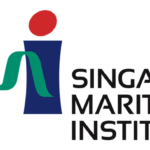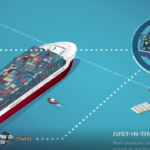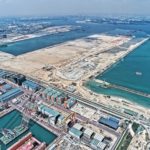
by SimPlus | Jul 27, 2009 | News
The Maritime and Port Authority of Singapore (MPA) has embarked on a joint project with SimPlus, to customize AnchorageView, a real-time anchorage monitoring and planning tool for efficient management of anchorages. AnchorageView is an information gathering, processing and sharing system using real-time as well as projected status of vessels and anchorages. SimPlus will tailor-make the anchorage planning tool to assist MPA users in efficient management of anchorage space within port limit.
AnchorageView will provide the following benefits to a busy maritime port: a) Efficient use of available anchorage space, b) Reduction in traveling times and accompanying costs for vessels, c) Better logistics planning for ship owners and maritime service providers, d) Enhanced navigational safety in port waters, and e) Comprehensive anchorage usage records.
SimPlus has also been commissioned to examine systematically the anchorage utilisation in the port of Singapore over the next 2 years. A regular analysis of the anchorage usage will give MPA in-depth knowledge and an understanding of the changes and trends in the types of activity carried out in the anchorages. This would also enable MPA to optimise and plan the required sea space for anchorages well in advance.

by SimPlus | Jun 24, 2009 | News
SimPlus was invited by Singapore Maritime Foundation (SMF) to contribute an article to the Shipping pages in the Transport Hub supplement of the Business Times (BT). The collaboration between SMF and BT aims to bring industry experts to pen articles on pertinent issues that would interest the maritime community and serve to heighten the public awareness and profile of the maritime industry.
In the article, Ms Stuti Nautiyal, a director of SimPlus, highlighted the intelligent technological tools and processes that many maritime companies are adopting so as to provide efficient and reliable service to their clients and to stay ahead of the competition. The full text of the article can be found here.

by SimPlus | May 27, 2009 | News
SimPlus has been appointed by the Maritime and Port Authority of Singapore to systematically examine the historical anchorage usage, given the recent reports on heavy utilization of the anchorages.
SimPlus is tasked with analyzing historical data to identify the changing trends in vessel arrivals and vessel dwell times in anchorages and the corresponding utilization levels of the anchorages. The findings will enable MPA to monitor the current anchorage utilization status and plan their future anchorages timely to meet the increasing demand.

by SimPlus | Sep 27, 2008 | News
SimPlus has recently secured a contract with a terminal operator to assess the impact on its operations when introducing low-emission yard equipment.
SimPlus will also propose guidelines and measures for effective deployment of these green machines. The project kicks off SimPlus’ long term commitment to help port authorities and operators and other players in the maritime industry to build a low emission yet efficient working environment, thus doing our part in saving gaia.

by SimPlus | Sep 24, 2008 | News
In a seminar organized by the Singapore Maritime Foundation and General Insurance Association of Singapore and sponsored by L.C.H. Pte. Ltd., Ms. Stuti Nautiyal, a Director of SimPlus, was invited to share some of SimPlus’ experience in planning and enhancing operations efficiencies of maritime facilities. She was co-speaker along with Mr Law Peng Keat of Jurong Port Pte. Ltd who shared his wealth of knowledge and expertise on Bulk Cargo Terminals.The seminar was organized as part of the Maritime Knowledge Shipping series to heighten the maritime knowledge of insurance and maritime professionals.

by SimPlus | Aug 27, 2008 | News
SimPlus is to work with Jurong Port Pte Ltd to look into the usage of its gate resources, conduct a capacity assessement and propose ways to make best use of the available and planned infrastructure.
Results from the study will help Jurong Port decide on the assignment of gate facilities, such that the service efficiency is ensured while additional infrastructure and operating costs are kept to a minimum.









